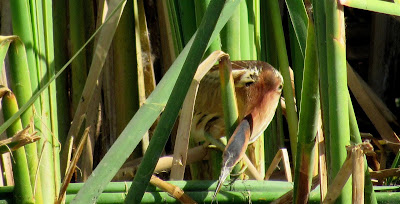The good news is that there was still some passage.
Spotted flycatcher is a late migrant generally so it was no surprise to see at least four of them present.
spotted flycatcher
There were, however, late migrants of species which I would have expected all to have gone by now.
woodchat shrike
A rather dishevelled woodchat shrike was one of them.
yellow wagtail
Another was a single yellow wagtail.
common ringed plover
A single common ringed plover and a single little stint stood out among the dozen or so kentish plover near the main water.
kentish plover
There are still migrant warblers coming through. I worked hard to find them. In the shade of the main avenue of trees I picked out a western Bonelli's warbler and two common whitethroat. There was also a late chiffchaff moving from one low bush in a marshy area to another.
A few barn swallow were the other migrants on site.
spur-winged lapwing
One bird that may be attempting to colonise the area is spur-winged lapwing. They never used to be any here. Now each time I come I see one or two. They seem to need permanent water sites but this one is fairly new.
Sudanese golden sparrow with red-billed quelea
As always in the Noaukchott area I studied the sparrow flocks and once again the local flock of Sudanese golden sparrow was carrying a lone red-billed quelea.
The other main birds at the site were larks and doves. Large numbers of crested lark were there from the start. I didn't see a single black-crowned sparrow-lark before ten in the morning. Then they were around continuously as they came back and forth to drink.
This place is very attactive to Namaqua dove, laughing dove and speckled pigeon. This time there were three feral pigeon as well.
speckled pigeon
more speckled pigeon
Everytime recently here, I have seen these types of numbers of speckled pigeon.
Namaqua dove
I don't know what the birding in Nouakchott for the rest of June will be like. Surely all the palearctic migrants are through. It could be very dull before I leave for the summer. Just maybe, some of the rainy season birds will arrive early. I will know soon enough.





















